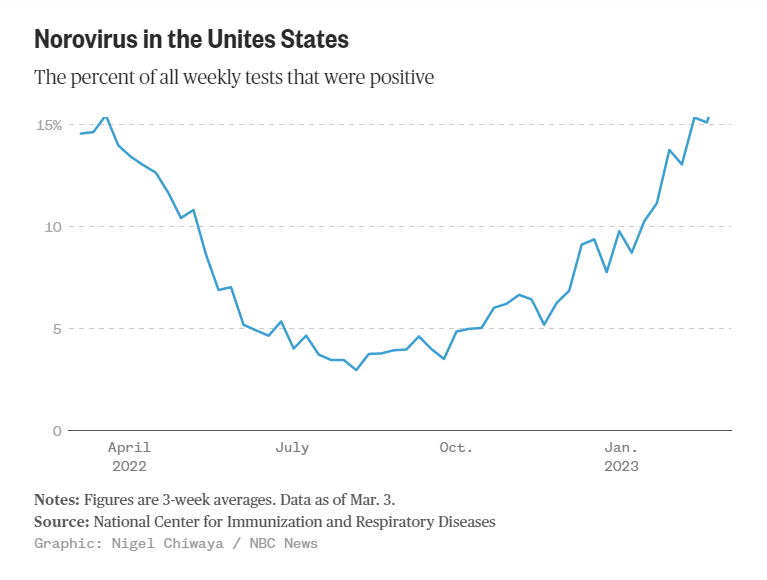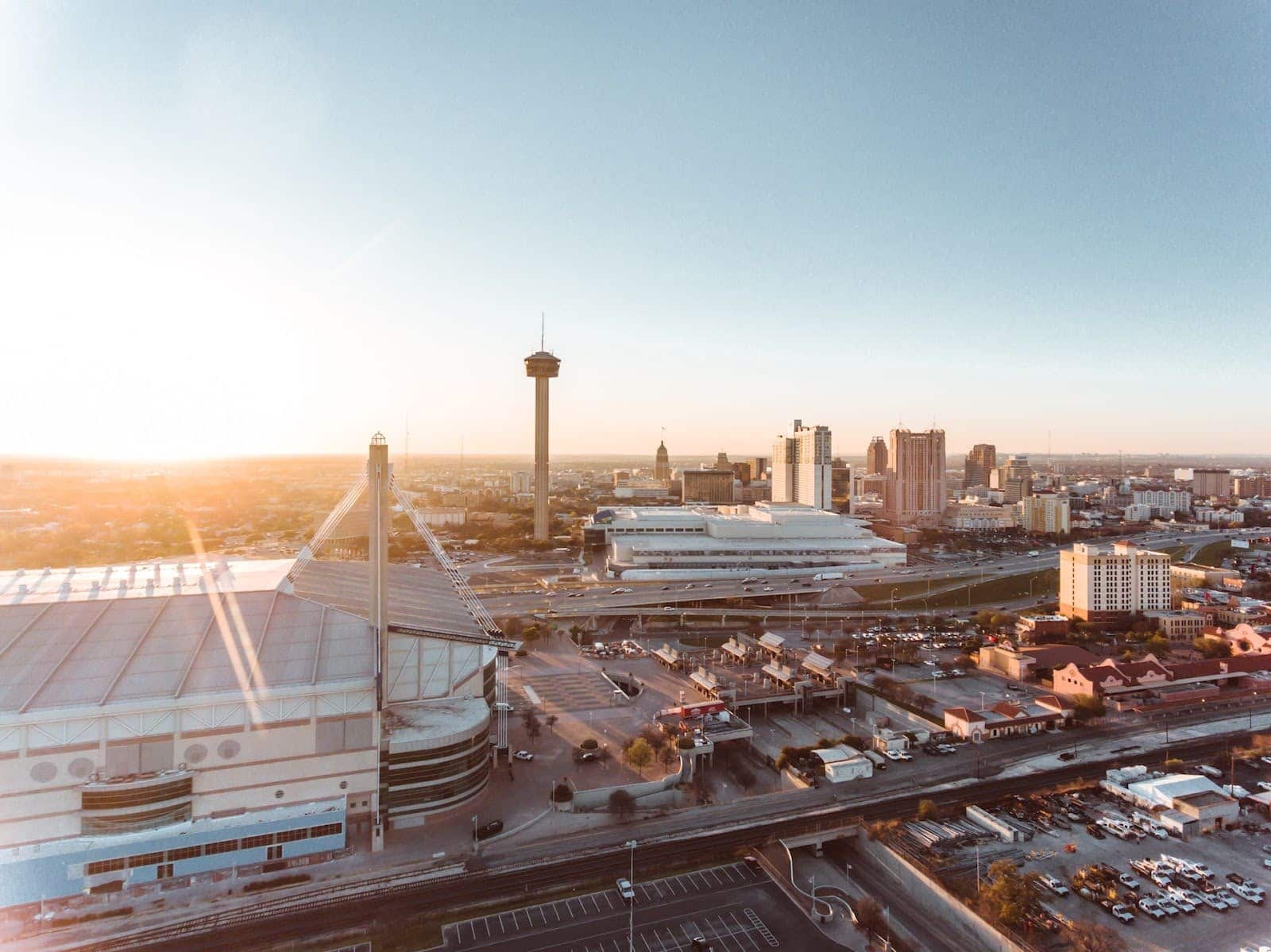Thursday Thunder: What Is Norovirus? + Bolivia’s Dengue Crisis

The world is currently seeing a reemergence of many illnesses, including those that weren’t in the spotlight for a while. As a result, it’s essential to stay informed about the places we visit and take precautions to prevent these diseases.
In today’s article, we’ll discuss Norovirus cases in the U.S. Plus, we’ll take a look at Bolivia’s Dengue crisis.
Let’s get started.
Norovirus Spiking in the U.S.
Norovirus is currently on the rise in the U.S. In fact, recent data from the CDC show that the virus is at a 12-month high.

The rate of positive Norovirus tests has been around 17% over the past three weeks. This is the highest rate recorded in the past year.
But what is Norovirus? Norovirus is a highly contagious virus that causes gastrointestinal symptoms such as:
- Diarrhea
- Vomiting
- Nausea
- Stomach pain
You might have heard it referred to as the “stomach flu”, but it is not related to the influenza virus. Additionally, mild fever and aches are also possible symptoms.
This week, the internet raised numerous concerns about Norovirus. As a traveler, here are some common questions that you might find interesting to address:
- How long does Norovirus last?
- What is the treatment for Norovirus?
- How does Norovirus spread?
- How can you prevent Norovirus?
- Is Norovirus a real concern?
Let’s explore them.
How Long Does Norovirus Last?
Norovirus-related gastroenteritis usually takes about 12 to 48 hours to develop, with a typical median period of around 33 hours, according to the CDC.
Norovirus is particularly concerning because it persists in infecting people for extended periods of time. According to the CDC, infected individuals can transmit the virus for up to two weeks, despite recovering from symptoms.
Norovirus Treatment
Currently, there is no treatment for Norovirus, but the CDC recommends drinking lots of fluids to prevent dehydration. The illness typically goes away within a few days.
How Does Norovirus Spread?
Norovirus is the primary cause of foodborne illness in the US. Contamination can occur if fruits or vegetables are grown or washed with contaminated water. Additionally, oysters can also pose a risk of Norovirus if harvested from contaminated water.
Kate Grusich, a CDC spokesperson said, “whether you are susceptible to Norovirus infection is partly determined by your genes”
How Can You Prevent Norovirus?
The best way to prevent Norovirus is to practice good hand hygiene and disinfect surfaces.
To disinfect surfaces, we recommend you:
- Disinfect the area with bleach and leave it on for at least five minutes.
- Afterward, clean the entire area again with soap and hot water.
Is Norovirus a Real Concern for Travelers to the U.S.?
Currently, there is no significant danger. Since pandemic restrictions have eased, the number of Norovirus outbreaks has reverted to levels similar to those seen in pre-pandemic times. That’s why the numbers may appear high at the moment.
Dengue Crisis in Bolivia
This week, Bolivia’s Ministry of Health announced over 11,000 cases of dengue fever, which has caused the death of 33 individuals, mainly infants. The country has implemented a red epidemiological alert in several regions, including Santa Cruz and La Paz.
What is Dengue? Dengue hemorrhagic fever is a disease transmitted by mosquitos that can cause:
- Organ failure
- Internal bleeding
- Death
Dengue fever has currently increased by four times in Bolivia.
What’s Behind this Dengue Crisis in Bolivia?
Experts agree that there are two primary reasons behind the increasing prevalence of mosquito-borne diseases worldwide:
- Global warming, which creates optimal temperatures for mosquitos to thrive.
- The surge in international travel following the pandemic, which has led to the spread of these diseases across borders.
Dengue prevention campaigns consist primarily of massive fumigation efforts since no globally approved vaccine has been effective against all four virus strains. But the country has been unable to curb the rising number of dengue cases.
Dengue Symptoms and Individual Prevention Methods
if you’re planning a trip to Bolivia, the Dengue fever symptoms to watch out for are:
- Nausea
- Vomiting
- Rash
- Aches and pains, such as eye pain (typically behind the eyes), and muscle, joint, or bone pain.
Other warning signs are
- Belly pain, tenderness
- Vomiting (at least 3 times in 24 hours)
- Bleeding from the nose or gums
- Vomiting blood
- Blood in the stool
- Feeling tired, restless, or irritable
The best ways to prevent dengue fever are:
- Using insect repellent
- Wearing long-sleeved shirts and long pants,
- Control mosquitoes inside and outside your home
Key Takeaways
As we’ve seen, Dengue and Norovirus pose serious challenges to our plans of travel to Bolivia and the U.S. While Norovirus has reached a relatively high threshold, Dengue in Bolivia has risen to unprecedented levels.
Hence, it’s extremely important to follow safety precautions. By understanding the risks and taking the necessary precautions, we can reduce the spread of illnesses and keep ourselves and others safe.
Want to get tested before you embark on your next adventure? Discover COVID testing centers near you with our international directory.



